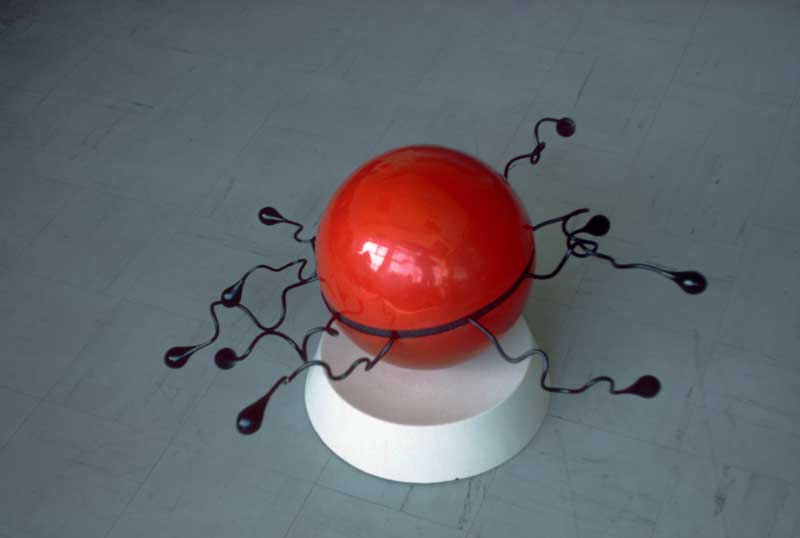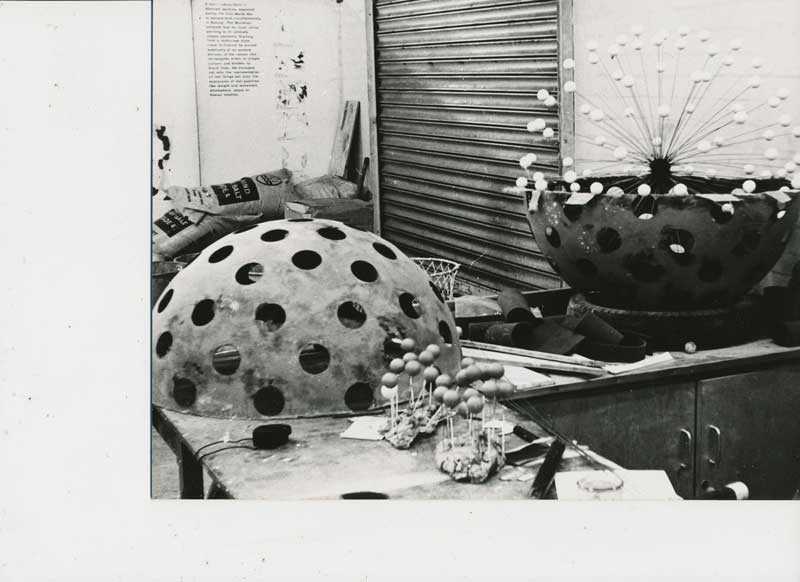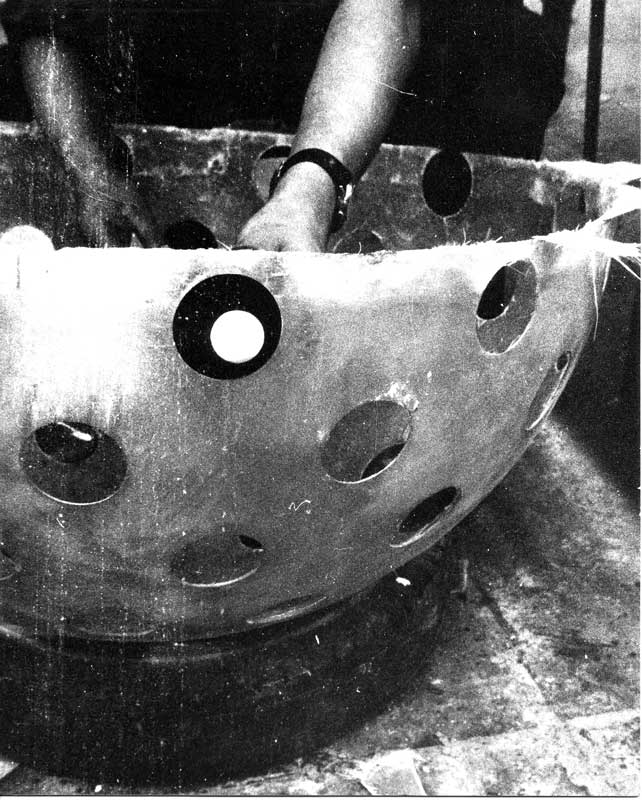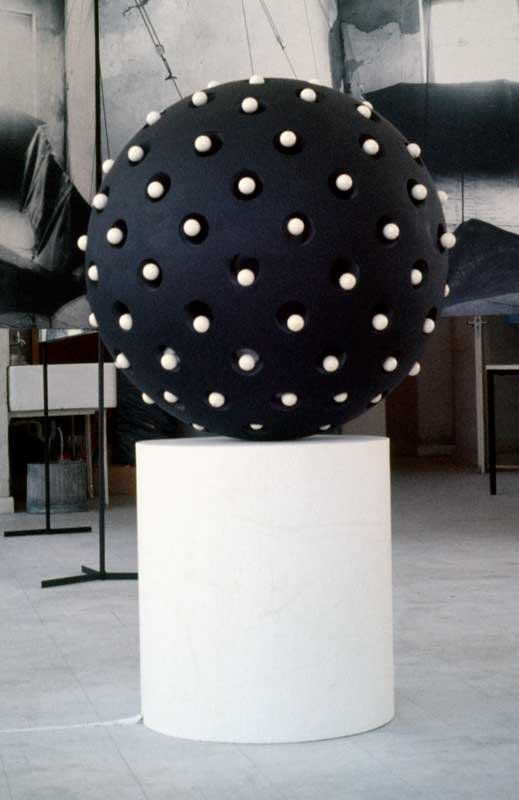Kinetic Sculpture – Mechanical

Wobbler, the first major exhibited piece was produced in 1968 whilst still a student at Cardiff College of Art. It had evolved from ideas that the myth of ’Pandora’s Box’ was a metaphor for sexual awakening, and used a trip mechanism to intermittently roll a blood-red shiny sphere around a shallow white dish. From the ‘equator’ of the sphere springy black organic forms protruded, which swayed and bounced as the sphere rolled. When still, the sculpture had a threatening appearance with its black and red colouring, but as soon as it moved it was transformed into a wobbling, dancing, fun structure. The piece was subsequently exhibited at the ICA in London in 1969-70 as part of Play Orbit, an exhibition of artworks that visitors could interact or ‘play’ with in the manner of toys or games. Children interacted with the piece in a very uninhibited manner and the piece was returned for repair part way through the exhibition, after children had been ‘feeding’ it with biscuits during play. See British Pathe News item http://www.britishpathe.com/record.php?id=73471 Four minutes 11 seconds into film.
Gordon became interested in the idea of sculptures with ambiguous roles. Superficially involving fun and play, but with contrasting undertones. He carried on using spheres, seeing in them a visual strength and a potential of energy or growth linking both natural and man-made forms. This geometric form immediately drew links between organic structures such as seeds and eggs, with large scale industrial structures in refineries, radar domes and nuclear energy.
His next major piece, 109 Balls constituted a large round white plinth with a 1 metre diameter black sphere sat on top. The surface of the sphere was penetrated by 108 holes, each of which had a white ball at its centre suspended on a length of spring wire hidden from view and radiating out from the centre of the black sphere. This again used a trip mechanism to gently raise the 108 white balls and after several minutes the white balls would suddenly drop back to the centre of their individual holes and, being suspended on the ends of the spring wire would at first all bounce up and down in unison, to then start swaying and bouncing more randomly for several minutes eventually coming to rest before the cycle started again.
The piece had been inspired by op-art images of the time, which created the illusion of movement within static paintings and prints. Instead of an illusion of movement, Gordon wanted to work with actual movement with similar visual qualities to the illusions.
Another piece in this series of works was a group of about 100 cotton wool balls hanging from the under-surface of a suspended architectural structure. This was open to the prevailing winds and in a light breeze would sway gently with waves of movement rather like an upturned field of white flowers.


